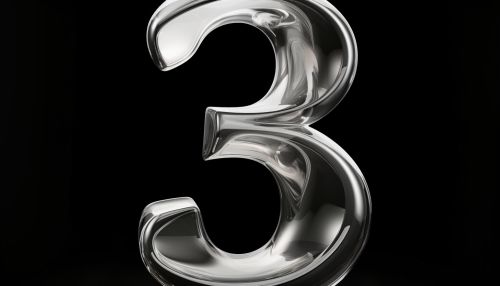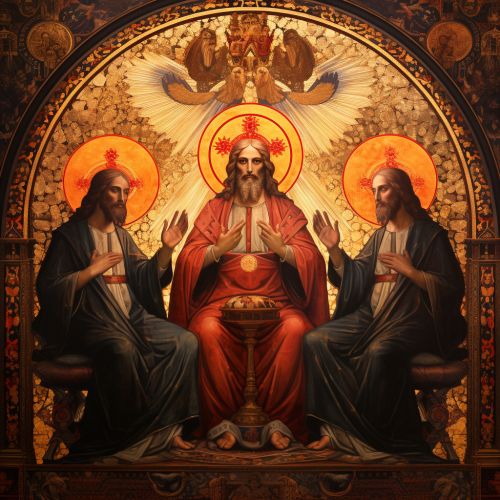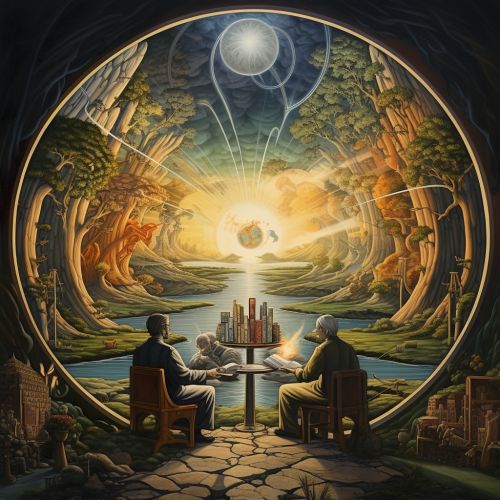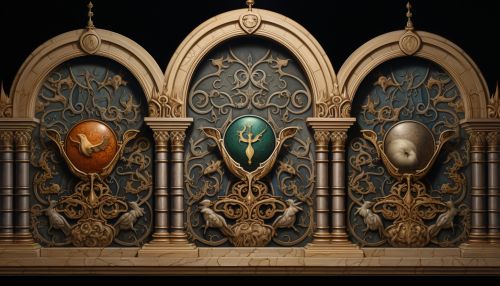Number Three
Introduction
The number three is a natural number following two and preceding four. It holds a significant place in various fields such as mathematics, science, culture, religion, and philosophy. This article delves into the various aspects and implications of the number three, its mathematical properties, its role in science, and its cultural and philosophical significance.
Mathematical Properties
Three is the first odd prime number, and the second smallest prime. It is also the only prime number to be one less than a perfect square[1]. In addition, it is the first Fermat prime (2^2^n + 1), as it is of the form 2^(2^0) + 1, and the first Mersenne prime (2^n - 1), as it is of the form 2^2 - 1[2].


Three is the only number equal to the sum of the integers below it, and the only number whose sum with those below equals the product of them and the number itself. It is the second Triangular number, following two and preceding six. In Roman numerals, three is represented as III, and in Ancient Roman military, a triarii was a soldier in the third line[3].
In the field of geometry, a triangle is the simplest polygon that can be drawn, having three sides and three angles. In three-dimensional space, three coordinates are needed to determine a point. This concept is used in various mathematical and scientific applications, including the three-dimensional coordinate systems used in physics and engineering.
Role in Science
In science, three is often a significant number. For instance, in physics, there are three dimensions of space - length, width, and height. In chemistry, water is composed of two hydrogen atoms and one oxygen atom, making three atoms in total. In biology, the genetic code in DNA and RNA is read in groups of three nucleotides, known as codons[4].


In the field of astronomy, the third planet from the sun in our solar system is Earth. The rule of three is also a guiding principle in astrophysics and cosmology, used to make predictions about the universe's structure and behavior[5].
Cultural Significance
The number three holds a significant place in various cultures and religions. In Christianity, the Holy Trinity consists of the Father, the Son, and the Holy Spirit. In Buddhism, the Three Jewels refer to the Buddha, the Dharma (the teachings), and the Sangha (the community of believers). In Chinese culture, three is considered a good number because it sounds like the word "alive", and it is associated with positive things like life and birth[6].


In literature and storytelling, the "rule of three" is a principle that suggests that a trio of events or characters is more humorous, satisfying, or effective than other numbers. This can be seen in fairy tales and folktales, as well as in popular literature and film[7].
Philosophical Implications
In philosophy, the tripartite theory of knowledge proposes that knowledge is justified true belief, thus involving three components: belief, truth, and justification. In Hegelian philosophy, the dialectical method involves a thesis, an antithesis, and a synthesis - a triadic structure[8].


In the field of metaphysics, some philosophers propose that reality is composed of three fundamental entities or substances. This view, known as trialism, contrasts with dualism and monism[9].
See Also
- Natural number
- Prime number
- Odd number
- Fermat prime
- Mersenne prime
- Triangular number
- Rule of three (writing)
- Tripartite theory of knowledge
- Trialism
References
- ↑ Wells, D. (1986). The Penguin Dictionary of Curious and Interesting Numbers (p. 23). London: Penguin Group.
- ↑ Wells, D. (1986). The Penguin Dictionary of Curious and Interesting Numbers (p. 23). London: Penguin Group.
- ↑ Wells, D. (1986). The Penguin Dictionary of Curious and Interesting Numbers (p. 23). London: Penguin Group.
- ↑ Alberts, B., Johnson, A., Lewis, J., Raff, M., Roberts, K., & Walter, P. (2002). Molecular Biology of the Cell (4th ed.). New York: Garland Science.
- ↑ Hawking, S. (1988). A Brief History of Time. Bantam Books.
- ↑ Numbers in Chinese culture. (n.d.). In Wikipedia. Retrieved from https://en.wikipedia.org/wiki/Numbers_in_Chinese_culture
- ↑ Rule of three (writing). (n.d.). In Wikipedia. Retrieved from https://en.wikipedia.org/wiki/Rule_of_three_(writing)
- ↑ Hegel, G. W. F. (1807). The Phenomenology of Spirit. Oxford University Press.
- ↑ Trialism. (n.d.). In Wikipedia. Retrieved from https://en.wikipedia.org/wiki/Trialism
